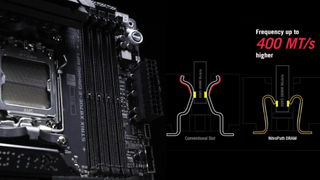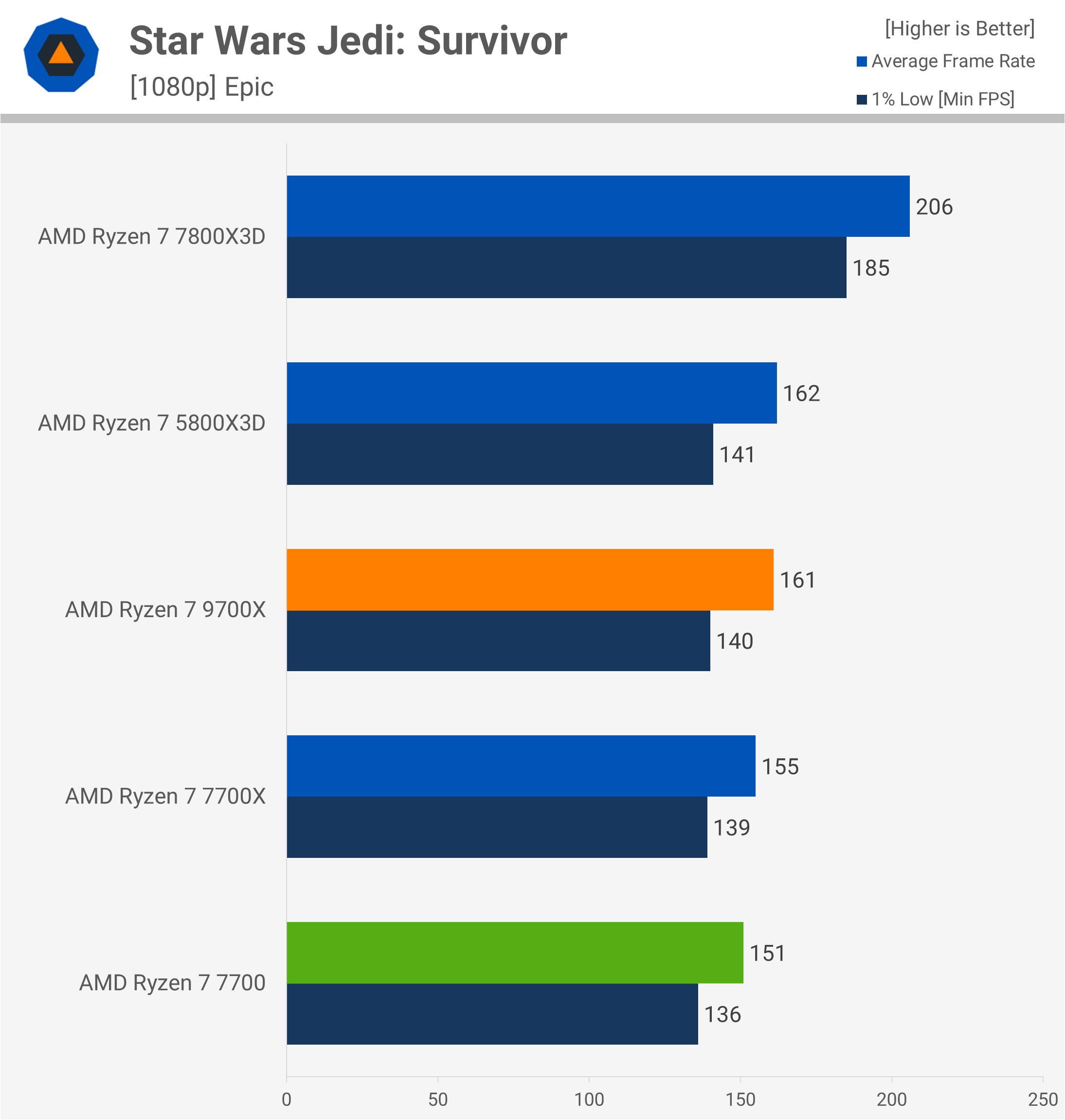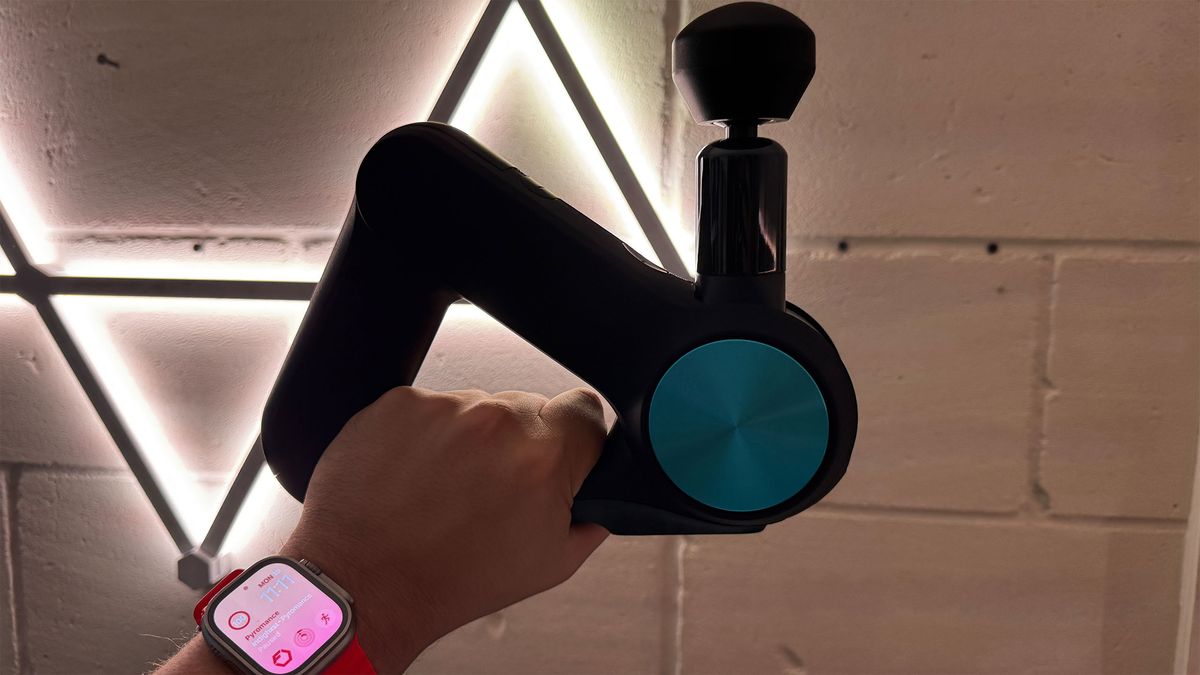Asus's new short NitroPath RAM slot design, arriving on select Asus X870E and Z890 motherboards, boosts RAM speeds by up to 400 MT/s by cutting down on harmful electrical interference from empty RAM slots. Der8auer, a fixture in the extreme overclocking space, recently uploaded his analysis of the new tech, helping to elucidate how a better RAM slot can make RAM more stable at high speeds.
Der8auer's video, which includes previously unseen images and insider quotes, was started based on a strange observation. NitroPath RAM slots are not included on Asus's 2-RAM-slot high-end Z890 motherboards—such as the upcoming ROG Maximus Z890 Apex—even though Maximus boards are typically tuned for extreme overclocking. Omitting a strictly better RAM slot from a high-end motherboard seems a strange choice by Asus, but further analysis reveals that NitroPath would likely make no impact on a 2-slot motherboard.
NitroPath slots are around 40% shorter than a standard DRAM slot. This height difference also shortens the metal contacts that touch a DIMM's contact pins and bends the slot's contacts down rather than up and out. Any exposed metal in a circuit acts as an antenna and creates electrical noise; unpopulated RAM slots are not immune to this phenomenon.
How Empty RAM-Slots cause Trouble - ASUS NitroPath - YouTube

When a dual-channel, four-RAM-slot motherboard has two slots populated with RAM and two empty, the empty slots emit enough noise to interfere with RAM operation at high speeds. This interference is why many servers occasionally use dummy RAM sticks to populate all empty RAM slots, safely terminating their open connections.
The first and second images in the slideshow compare the electrical activity and performance of DIMMs running at medium and high speeds, with RAM in slots A2 and B2 and slots A1 and B1 staying empty. The middle column's DIMMs use standard RAM slots, with the right column connected via NitroPath slots.
The eye chart diagram shows the RAM's electrical activity. In the first image, all four diagrams show two blue sinusoidal waves crisscrossing over each other, leaving a tall gap in between (emphasized with red). This gap, the "eye," reflects electrical signal quality on the axes of time (x-axis) and voltage (y-axis).
In the first image, there is not much difference in signal quality between NitroPath and standard RAM slots, meaning NitroPath also will not make much difference for RAM at average speeds. But image 2 tells a different story. Here, clocked at 10,000 MT/s, standard RAM slots have a problem. The RAM in the standard slots has no eye, and its signal is muddled severely. This muddled signal results in an unstable system, which may not boot. The NitroPath slots have no such problem. The eye, while small, is still visible, and RAM in NitroPath slots can run stable at 10,000 MT/s.

If the technobabble above lost you, here's a simpler summary: NitroPath RAM slots have significantly shorter contacts, so when empty, they do not emit as much electrical interference, which makes systems unstable at higher RAM clocks. This is likely why Asus elected not to include the new slot tech in its upcoming high-end 2-slot motherboards, as 2-slot boards will not have to worry about empty RAM slots emitting noise.
NitroPath slots, while shorter than standard RAM slots, are also more rugged. Asus's press release claims that NitroPath slots have a 57% higher retention force than standard ones and 20% improvements in lateral latching and release forces. This increased toughness should make a difference for gamers or other enthusiasts who often replace DIMMs in their systems, whether for periodic upgrades or benchmarking and testing. The slots, engineered by Asus and Lotus, will become available for use by other motherboard OEMs after one year, meaning enthusiast-grade gaming motherboards may all be seeing a rising tide in 2025.
Be sure to watch Der8auer's video above for more details on the operation of NitroPath RAM slots and unique cross-section images of traditional vs. NitroPath designs. Intel motherboard partners will reveal their Z890 board designs on October 10, when we see which Asus boards are lucky enough to be fitted with NitroPath.

 1 week ago
12
1 week ago
12






:quality(85):upscale()/2024/10/17/848/n/1922729/9dece426671163b35dcb11.60305022_.jpg)


 English (US) ·
English (US) ·